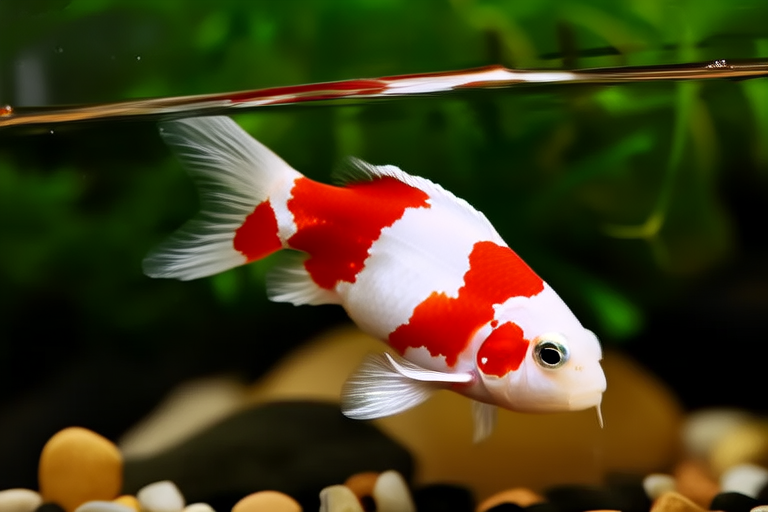Goldfish Behavior Decoded: What Their Actions Really Mean
Understanding the behavior of your goldfish is crucial for their well-being. These delightful creatures communicate through their actions, providing valuable insights into their health, mood, and environmental preferences. By decoding their behavior, you can ensure they live a long and happy life. This article will guide you through the nuances of goldfish behavior, offering practical tips for interpreting their signals and enhancing their living conditions.
The Importance of Understanding Goldfish Behavior
Observing your goldfish regularly is essential for maintaining their health and happiness. Healthy goldfish are vibrant, active, and responsive to their surroundings. Conversely, changes in behavior can indicate underlying issues such as poor water quality, disease, or stress. Recognizing these signs early allows for timely intervention, preventing potential complications. Moreover, understanding your goldfish’s behavior can deepen your bond with them, making the experience of keeping these pets more rewarding.
Swimming Patterns
Normal Swimming
Healthy goldfish swim gracefully, gliding through the water with smooth, fluid movements. They often explore their tank, interacting with decorations and plants. This indicates a balanced diet, proper water conditions, and overall good health. However, alterations in their swimming patterns can signal various issues.
Erratic Swimming
If your goldfish appears to be darting around erratically or swimming in circles, it could be a sign of distress. Possible causes include high ammonia levels, lack of oxygen, or a bacterial infection. It’s important to check the water parameters and consider consulting a veterinarian if the behavior persists.
Sunken or Floating Behavior
A goldfish that constantly sinks or floats at the surface might be suffering from buoyancy issues. This can result from overfeeding, constipation, or internal gas. A diet rich in fiber and regular fasting can help prevent these problems. Additionally, ensuring the water temperature remains stable can aid in maintaining their buoyancy.
Eating Habits
Normal Eating
Goldfish should exhibit consistent eating habits, consuming their food within a few minutes. They typically nibble on flakes, pellets, and vegetables, showing interest in their meals. Healthy eating patterns reflect good health and a comfortable environment.
Poor Appetite
A decrease in appetite can be alarming. Potential reasons include stress, illness, or unsuitable water conditions. If your goldfish shows a reduced interest in food, check the water quality and observe for other signs of discomfort. Adjustments in their diet or environment might be necessary.
Overeating
Goldfish have a voracious appetite and can overeat if given the opportunity. Overfeeding leads to digestive issues and obesity, which can shorten their lifespan. Feeding them small portions twice daily is advisable, allowing them to consume their food within a few minutes.
Reactions to Stimuli
Response to Light
Goldfish are photoperiodic animals, meaning their activity levels vary with light exposure. They tend to be more active during daylight hours and less so at night. Sudden changes in light intensity can cause stress, affecting their behavior. Providing a consistent lighting schedule helps maintain their natural rhythms.
Reaction to Movement
Goldfish are curious creatures and often approach new objects or movements in their tank. This curiosity can be beneficial for observing their interactions with their environment. However, sudden or excessive movement near the tank can startle them, causing stress. Ensuring a calm and stable environment minimizes such disturbances.
Interpreting Signs to Improve Care
By closely observing your goldfish, you can gain valuable insights into their needs and preferences. Regularly monitoring their behavior allows for timely adjustments in their care routine. For instance, if you notice erratic swimming, you might need to test the water for ammonia or nitrite levels. Similarly, changes in eating habits can prompt a review of their diet or tank conditions.
Keeping a journal of your observations can be particularly useful. Documenting details such as feeding times, water changes, and any unusual behaviors helps track patterns and identify potential issues. Sharing this information with a veterinarian or experienced aquarist can provide additional perspectives and solutions.
Creating a Healthy Environment
To encourage positive behaviors, it’s essential to create a stimulating and comfortable environment for your goldfish. Start by ensuring the water quality is optimal. Regular partial water changes, maintaining appropriate temperature, and ensuring adequate filtration are key factors.
Incorporating plants and decorations provides hiding spots and enriches their habitat. These additions stimulate exploration and reduce stress. Additionally, ensuring the tank has ample space for swimming promotes physical activity, contributing to their overall health.
Feeding them a balanced diet that includes a variety of foods is also crucial. Offering a mix of flakes, pellets, and fresh vegetables ensures they receive all necessary nutrients. Avoid overfeeding and opt for high-quality, nutritious food.
Conclusion
Decoding goldfish behavior enhances your ability to provide optimal care, fostering a healthier and happier aquarium environment. By understanding their swimming patterns, eating habits, and responses to stimuli, you can address potential issues promptly and enhance their quality of life. Creating a stimulating and comfortable habitat further encourages positive behaviors, ensuring your goldfish thrive. With careful observation and thoughtful adjustments, you can enjoy a fulfilling relationship with these charming aquatic companions.
